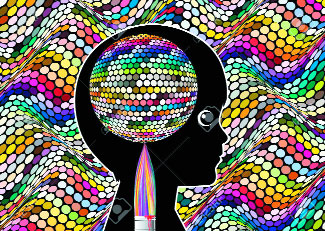As various studies stand testament to the fact, visual cues maximise information retention in people besides being processed faster by the brain as compared to plain text, says Minal Srivastava
Most of us have noticed ourselves being influenced by colours in some way or the other. Even though they can only be perceived by eyes, particular shades of certain colours appear to invoke responses that are associated with senses other than the sight. We’ve all heard and even experienced — the colour Red being loud, Blue being cold or Yellow being calm. Although we may not exactly understand how these things happen, we have certainly come a long way in learning to manipulate this phenomenon to our advantage, especially in the domain of learning and education.
Colours and their effect on early learning
Multiple studies link the role of colours with improved knowledge acquisition in e-learning processes. Educational institutions have been manipulating colours, not just digitally but also by strategic designing of the physical spaces, to maximise information retention, increase student participation, enhance communication and comprehension, and so on. That is why it is common to find vibrant coloured furniture in preschool classrooms and gentle shades covering the walls of libraries or reading rooms.
The choice of colours and the strength of shades used during a particular course of the learning process depends upon the nature of the course and that of the students. For example — bright and vibrant colours like red and yellow on chairs or other furniture are usually used to stimulate younger students. Teachers can also wear bright colours to draw and hold their attention. Teachers also use chart papers with colourful background and picture books with vividly drawn sceneries and characters to communicate with the kids effectively and with ease. As various studies stand testament to the fact, visual cues maximise information retention in people on top of being processed faster by the brain as compared to plain text.
In older grades, the use of gentler and more relaxing colours is encouraged to provide the students with a stress-free atmosphere where to engage in learning activities. One may therefore notice that most libraries have mellow or dark coloured furniture and mostly warm-toned walls of light green colour or lighter shades of blue. Senior classroom walls too, generally have temperate shades of primary colours. Whereas, in places where one needs to stimulate the brain or engage in energetic activities like dancing or indoor sports, brighter shades of colours like orange, purple and red are used for decorating the interior. Other devices at schools and colleges like displays that feature “thought-provoking” material have powerful and stimulating colours on the background to reaffirm the nature of ideas exhibited.
Enhancing the e-learning process
A strategic use of colour palette lends a unique and effective edge to the e-learning process. Teachers can leverage colourfully crafted presentations, for instance, to drive home the lesson in the most effective and entertaining manner. When used well, coloured educational supplements can overcome the monotony of the text-based learning process, hence elevating the learning and teaching experience of the pupil and teacher respectively. However, educators must also keep in mind several hazards that accompany the manipulation of colours, especially in case of younger students who may be prone to conditions like overstimulation. With a balanced and well-calculated use of colours, the monotonous learning activity can be transformed into a vibrant and colourful experience for all.


























